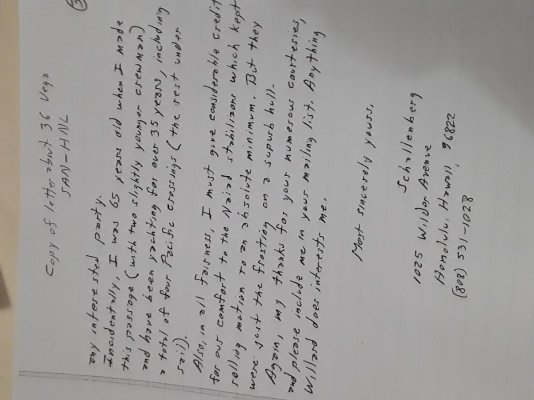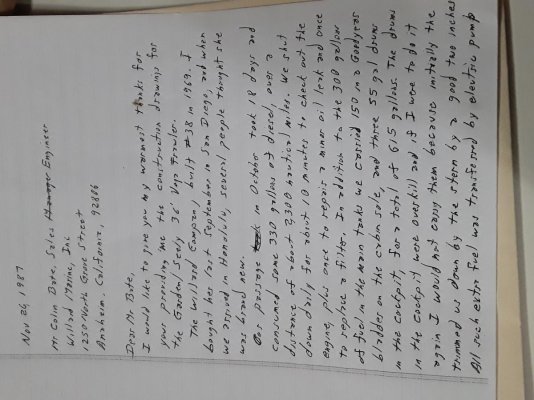mvweebles
Guru
- Joined
- Mar 21, 2019
- Messages
- 7,797
- Location
- United States
- Vessel Name
- Weebles
- Vessel Make
- 1970 Willard 36 Trawler
Points well made. I see what you're driving at. The Willard 30 that Steve D'Antonio and Bill Parletore took to Bermuda had a small yanmar.Between the 2, the JD is almost certainly the longer lived engine. It's a heavier build, lower revving, etc. But with the fairly low continuous power demand of a W36 (probably not more than 20 - 30 hp depending on speed), there are plenty of less durable engines that will still live a very long life. If you wanted the absolute maximum range, it might just be a matter of going for a more efficient engine that'll only last 10k hours instead of 20k.
Unfortunately in this case, anything naturally aspirated will give up some efficiency. From what I can find, the 75hp Beta (marinized Kubota) is slightly higher revving than the JD (by 100 rpm), smaller at 3.6 liters, and 50 lbs lighter. But it's not any more efficient at full power. Not sure if it's better under lighter load from the data I've seen. Cummins is a no-go for choices, as their smallest marine diesel these days is 120hp.
Thanks
Peter


